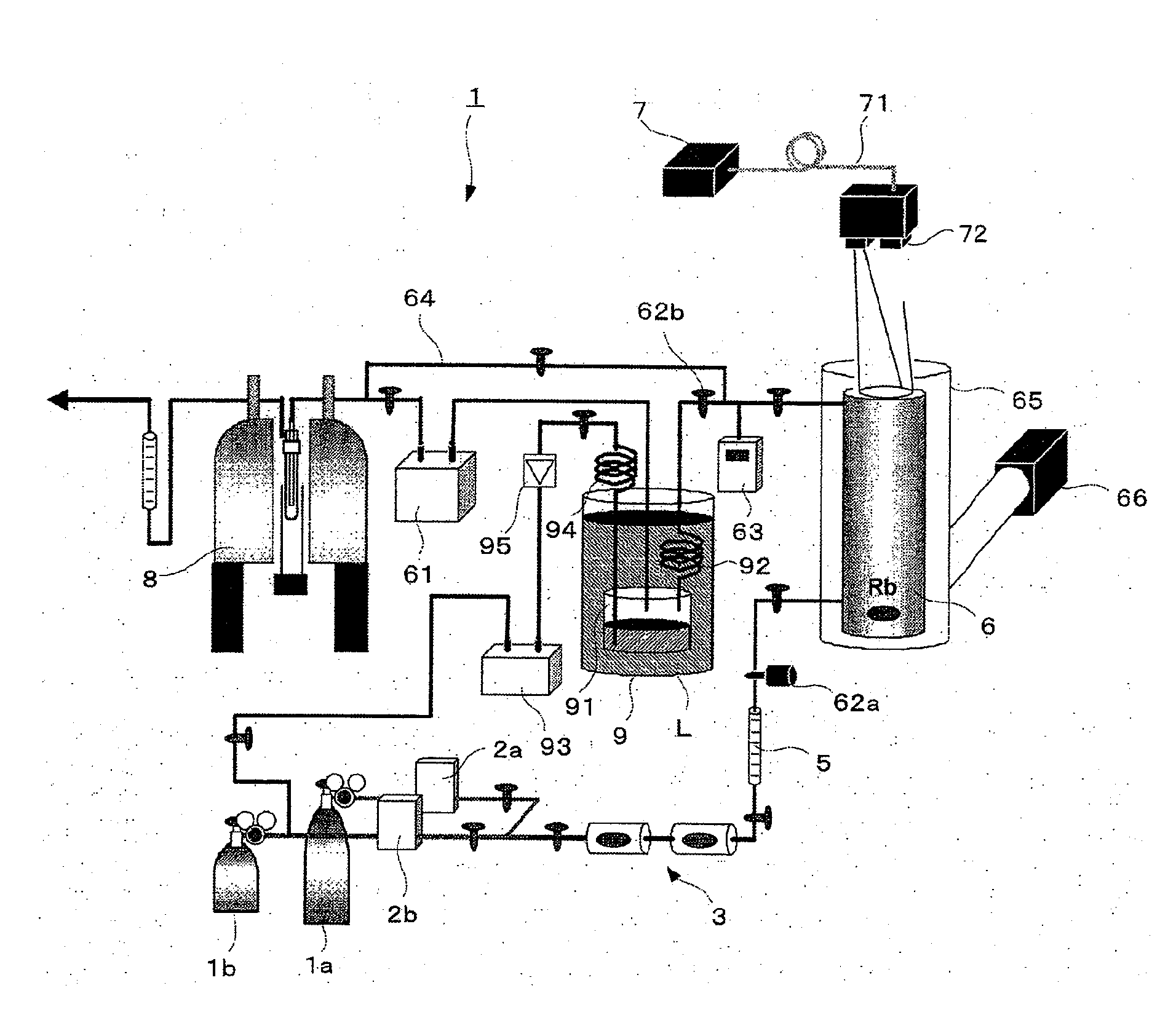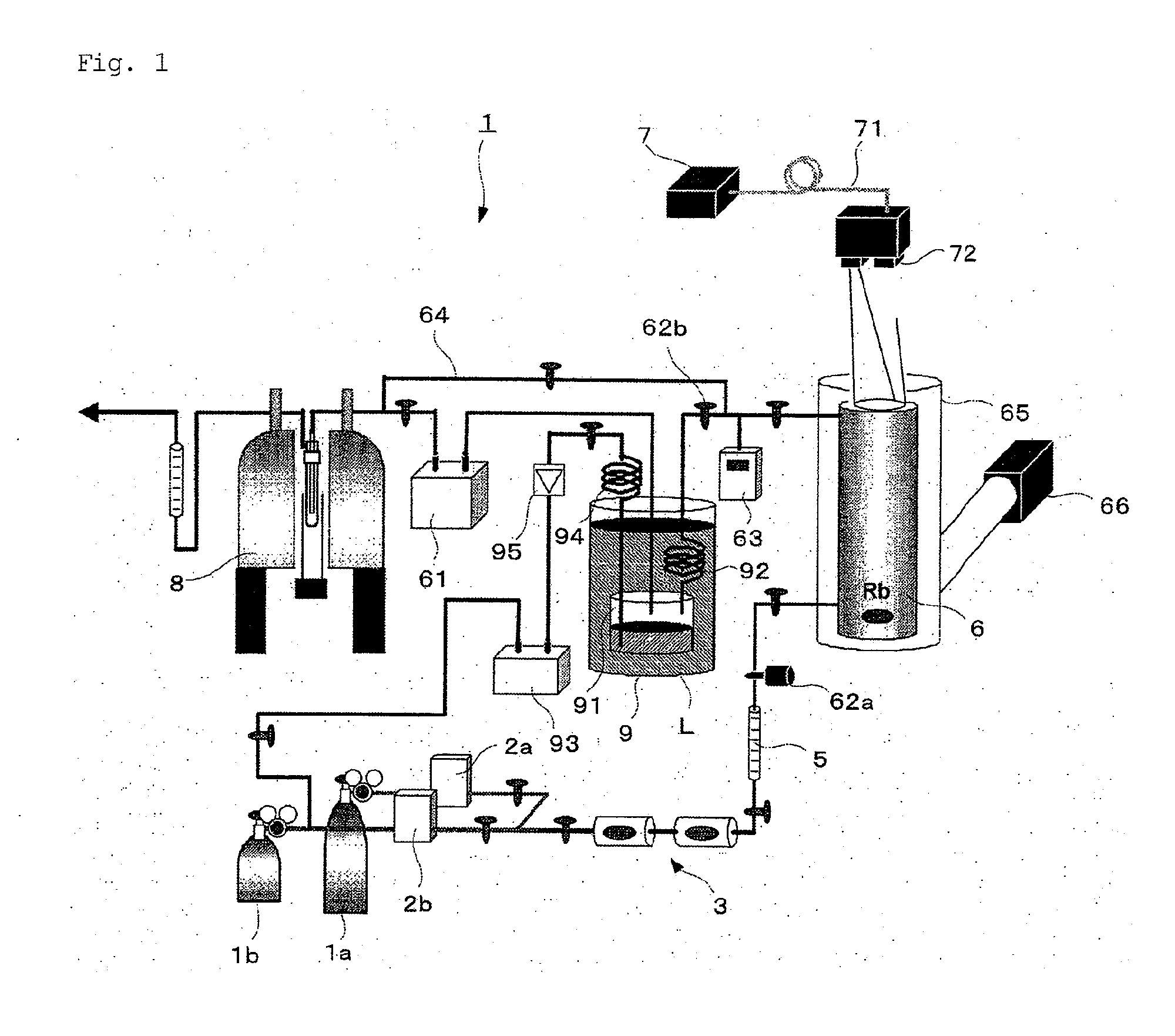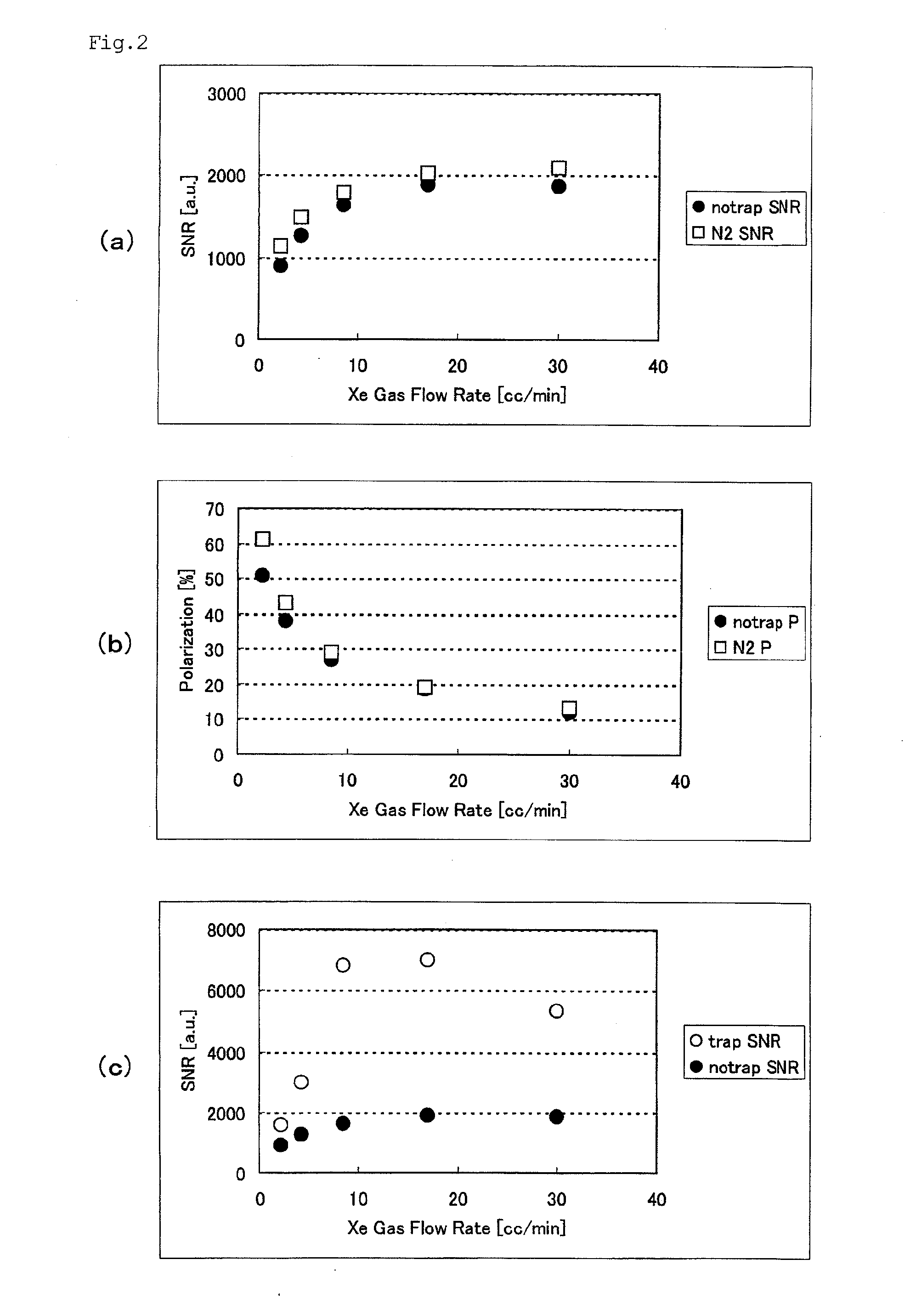Polarized xenon gas concentration method, polarized xenon gas manufacturing supply device, and MRI system
a technology manufacturing supply device, which is applied in the direction of magnetic variable regulation, separation processes, instruments, etc., can solve the problems of reducing the polarization rate, unable to produce continuous polarized xenon gas, and limited use of polarized xenon gas, etc., and achieves high polarization rate and high sensitivity. , the effect of high polarization ra
- Summary
- Abstract
- Description
- Claims
- Application Information
AI Technical Summary
Benefits of technology
Problems solved by technology
Method used
Image
Examples
examples
[0059]The present invention is explained in detail below with reference to Examples. However, the scope of the invention is not limited to the Examples described below.
example a
Using Isobutene as the Diluent Gas
Relationship Between Diluent Gas and Sensitivity
[0060]A cylindrical polarization cell (diameter: 60 mm, length: 30 cm) storing rubidium as an alkali metal was placed in a 110° C. high-temperature bath. A mixture of a xenon gas and a diluent gas was introduced to the polarization cell. After the inside pressure of the polarization cell was set to 0.15 atm, the cell was emitted for 20 minutes with the circularly polarized light which was obtained by converting a laser light with wavelength of 795 nm and output of 90 W emitted from the excitation light source. While feeding the gas in the cell into an NMR sample tube, NMR signals were measured to evaluate the signal-to-noise ratio (SNR). A similar measurement was conducted using a standard sample for SNR measurement. Based on the ratio between the SNR of the gas in the cell and that of a standard sample, the polarization rate PXe of 129Xe was obtained using the formula below.
PXe=(S / N)p(S / N)e·(Xe%)e(Xe%...
example b
Using Propene as the Diluent Gas
[0069]Table 3 shows the results of Example 2 conducted using propene (C3H6, H3CCH═CH2, boiling point: −47.7° C., melting point: −185° C.) as the diluent gas instead of nitrogen. The experiments were conducted in the same manner as in Example 1 except that the polarization cell had a diameter of 60 mm with a length of 20 cm and that the laser power used for excitation was 90 W and the temperature of the cryostat used for the condensation of propene was −114° C. Because Example 2 differed in the cell size and laser power from those in Comparative Examples 1 and 2, the comparative experiments were re-conducted under the same conditions as in Example 2 and these experiments were defined as Comparative Examples 3 and 4.
[0070]The graph in FIG. 4 shows the signal-to-noise ratio (SNR) in Table 3. In FIG. 4, the white dots (◯) indicate the results of Example 2, the black dots () indicate the results of Comparative Example 3, and the squares (▪) indicate the r...
PUM
| Property | Measurement | Unit |
|---|---|---|
| natural abundance | aaaaa | aaaaa |
| natural abundance | aaaaa | aaaaa |
| boiling point | aaaaa | aaaaa |
Abstract
Description
Claims
Application Information
 Login to View More
Login to View More - R&D
- Intellectual Property
- Life Sciences
- Materials
- Tech Scout
- Unparalleled Data Quality
- Higher Quality Content
- 60% Fewer Hallucinations
Browse by: Latest US Patents, China's latest patents, Technical Efficacy Thesaurus, Application Domain, Technology Topic, Popular Technical Reports.
© 2025 PatSnap. All rights reserved.Legal|Privacy policy|Modern Slavery Act Transparency Statement|Sitemap|About US| Contact US: help@patsnap.com



